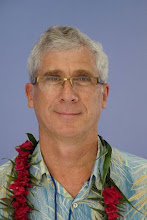Thursday, November 25, 2010
Celtic Christianity Ecology and Holiness
"the British Church has always represented an ideal for those who have known of it, and not simply as a Golden Age of innocence and purity which in the words of Nora Chadwick, has "never been surpassed and perhaps been equalled only by the ascetics of the eastern deserts, " but also, and more importantly, as an alternative seed, "a light from the west," perhaps obscure and even alien, but nevertheless powerful and true with the kind of reality we seem to need today." (pg. 9-10).
Celtic Christianity Ecology and Holiness (1982) was given to me by a friend and I never really looked at it till this morning. And how pleasantly surprized I was! It's not like anything I thought it would be. These past fews months I expected some long agrument on how the Celtic church and saints were the founding members of the Green party. Not so!
Celtic Christianity Ecology and Holiness is a wonderful anthology of Celtic stories, sayings, tales and legends. In addition, the book also contains a useful introduction and fascinating drawings and pictures which will appeal to anyone interested in Celtic studies. Leafing through this small book reminded me of David Adam's wonderful books which contain the same satisfying sensual blend. Then again, this is precisely one of the attractive features of Celtic Christianity-that it also appeals both to the mind and the senses-they are not mutually exclusive.
The book is "framed" by a useful essay outlining the heritage of Celtic Christianity. The essay deserves several readings and argues the main features of the Celtic tradition are ecology, learning, science, poetry, and art. In this sense, the books title is somewhat deceiving. Nonetheless, the writers argue that the Celtic church offered an alternative "brand" of Christianity than what was taking place on the European mainland, and the natural environment played a key role:
"It was not only that these scribes and achorites lived by the destiny of their dedication in an environment of wood and sea; it was because they brought into that environment an eye washed miraculously clear by continious spiritual exercise that they, first in Europe, had that strange vision of natural things in an almost unnatural purity." (pg. 22).
Here monasteries flourished, and the Seven Liberal Arts flourished, producing great men and women saints. Columbanus was one of the greatest Celtic saints:
"What is best in the world? "To do the will of its maker. What is this will? That we should do what he has ordered, that is, that we should live in righteousness and seek devotedly what is eternal. How do we arrive at this? By study. We must therefore study devotedly and righteously. What is our best help in maintaining this study? The Intellectus, which probes everything and, finding none of the world's good in which it can permanently rest, is converted by reason into the one good which is eternal". (pg. 23)
Celtic Christianity Ecology and Holiness introduces the reader to fourteen saints some better known than others including Patrick, Brigit, Findian, Senan, Brendan, Kevin, Ciaran, Mochudan, Columba, Columbanus, Gall, Fursey, Aidan and Cuthbert. This is the perfect kind of book to keep on the nightstand, so that you can dip into it each night before you go to sleep, flip through its pages, and learn something new about the great tradition of Insular Christianity.
Subscribe to:
Post Comments (Atom)




No comments:
Post a Comment